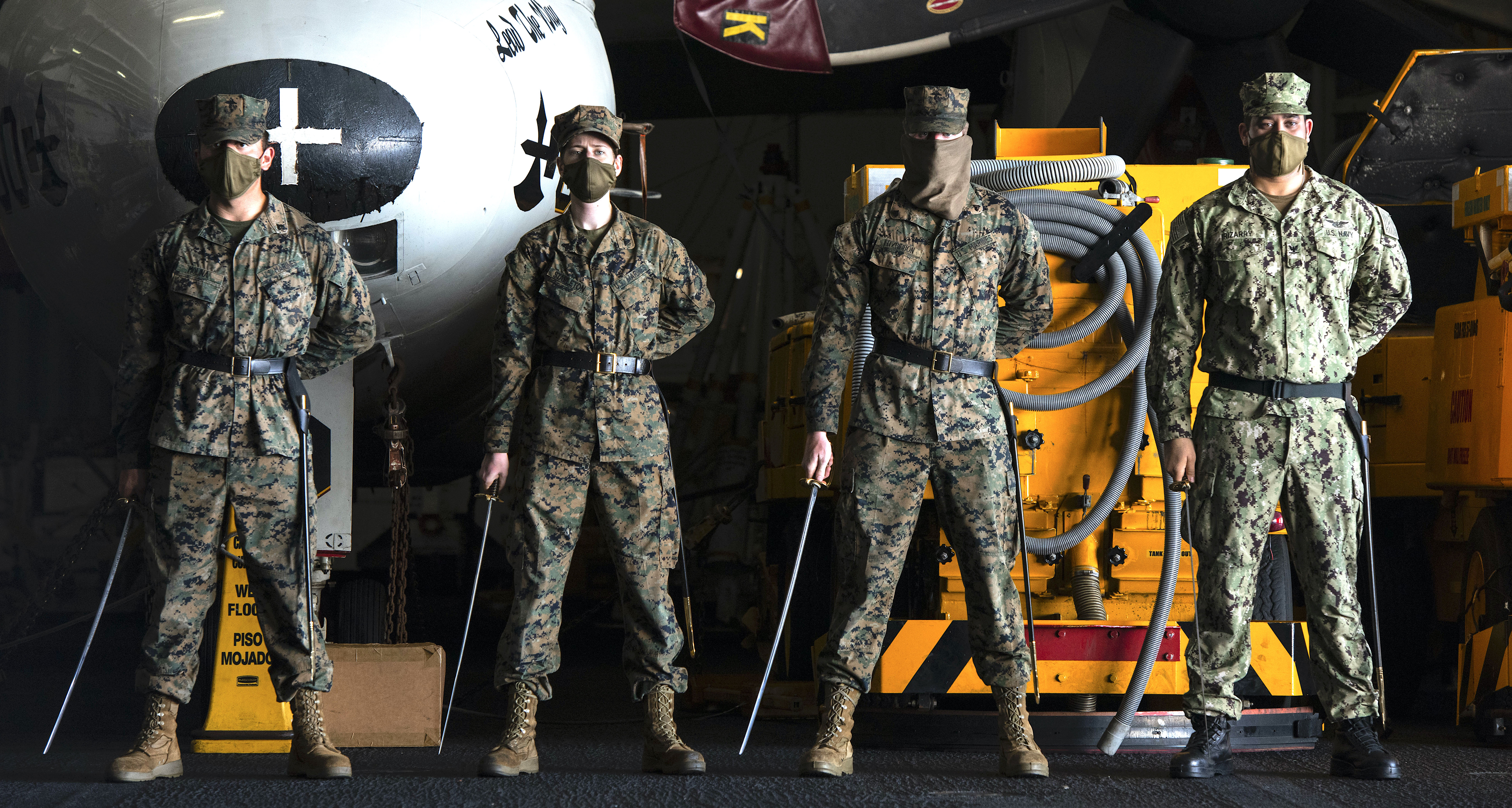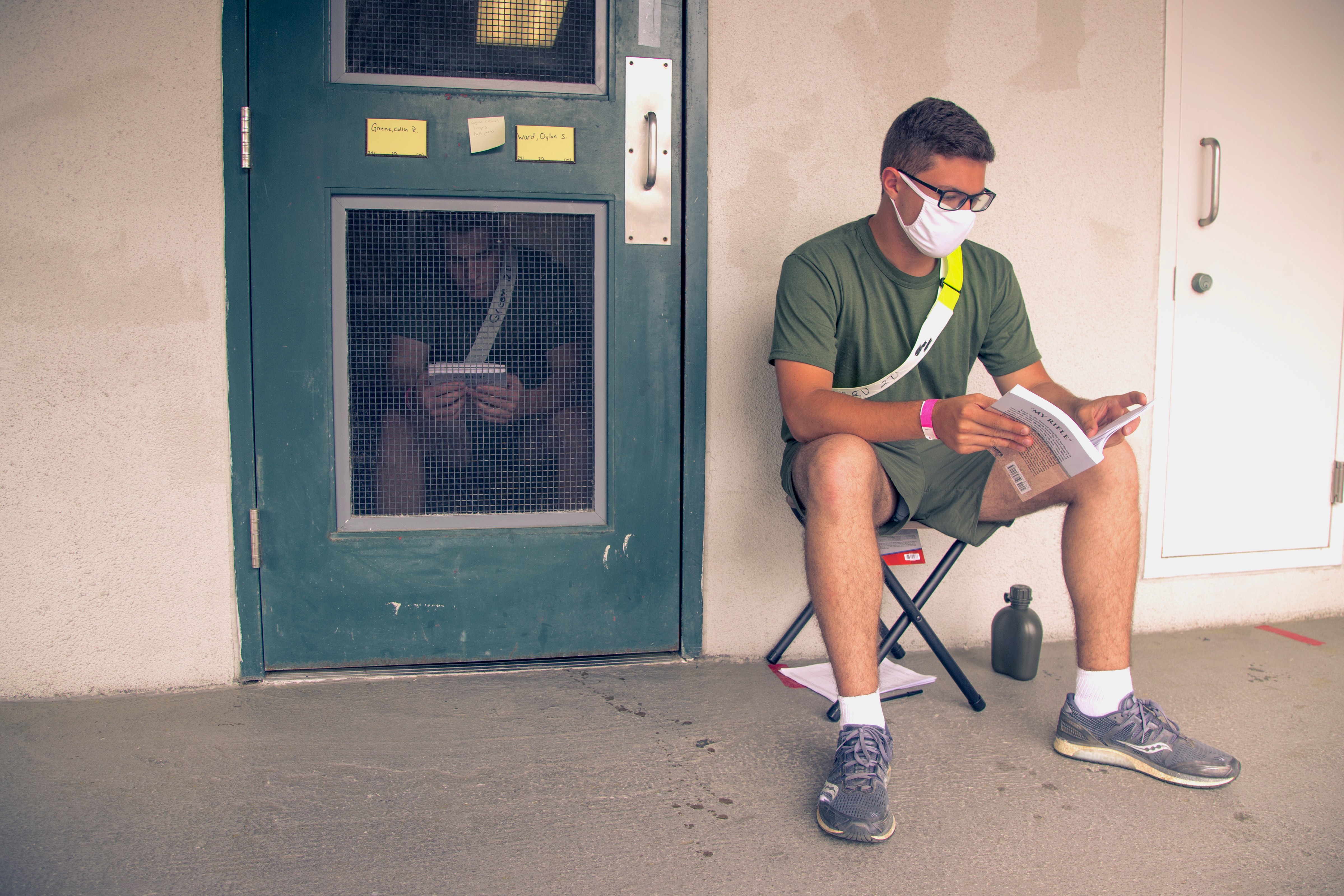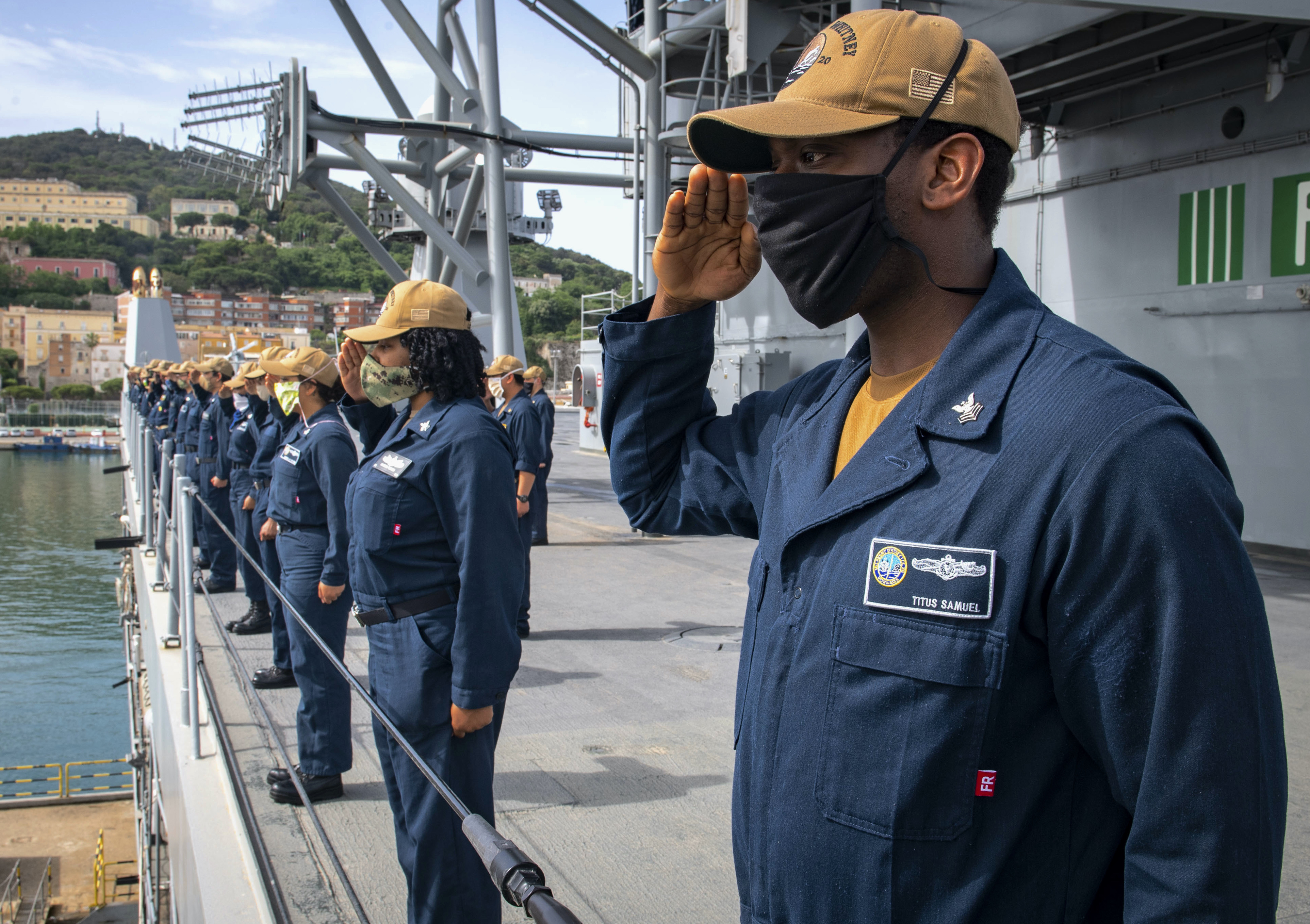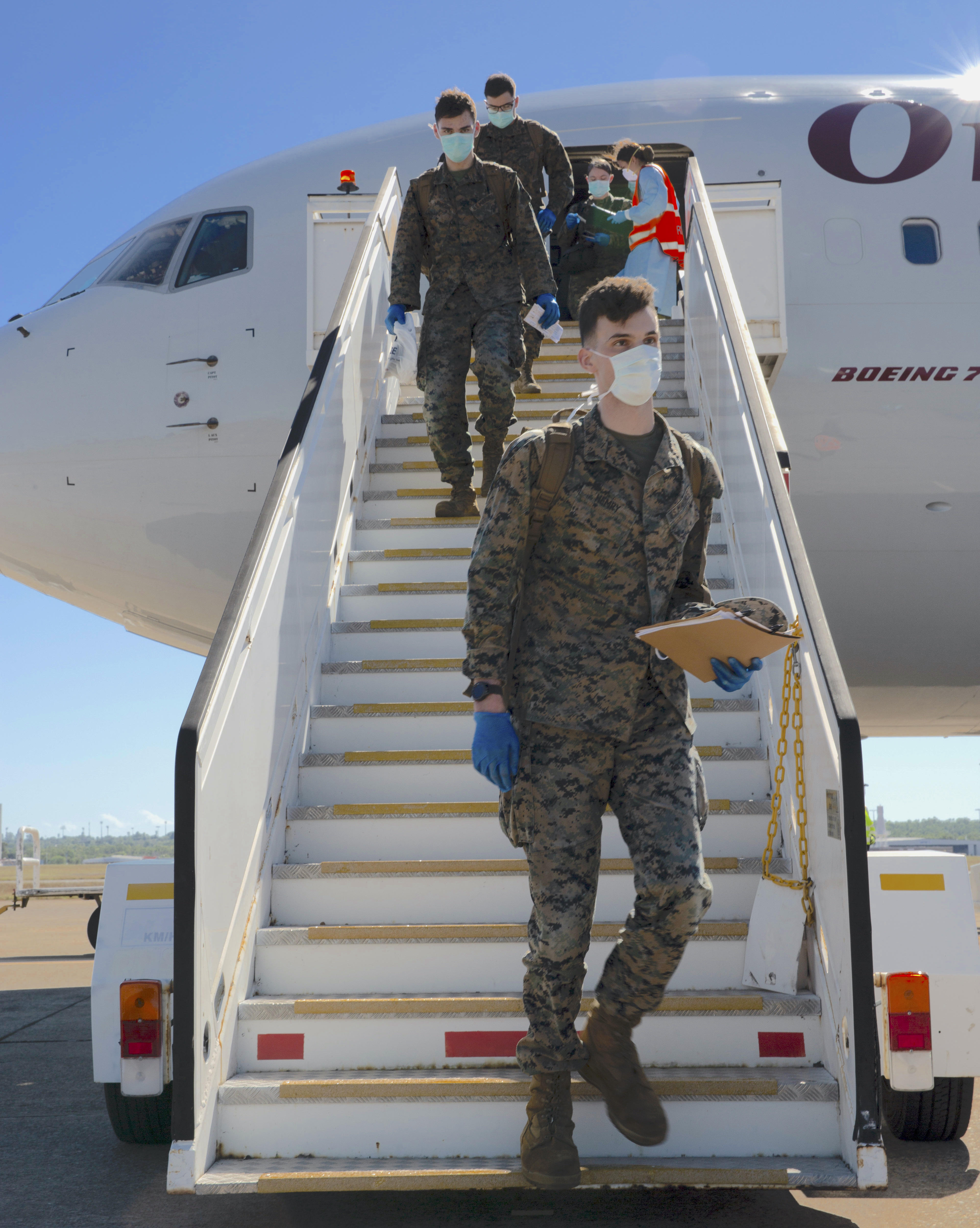
The COVID-19 pandemic may leave a legacy of focusing more on the health and physical readiness of individuals serving in the military, the sergeant major of the Marine Corps said today in an online forum.
Asked what the Marine Corps might retain from its coronavirus mitigation measures in place now, Sgt. Maj. Troy Black said that, whether it’s in training new recruits, training existing Marines or sending them forward to operate, “you’ve got to focus on people now and their health and safety almost as much as we think about equipment.”
“Navy and Marine Corps piece of equipment has a very dedicated process to make sure it’s maintained, it’s ready; it goes through the processes, and it doesn’t fly or float or shoot until it does those things,” he said while speaking at a webinar co-hosted by FedInsider and Government Matters.
“The human aspect of that is, hey, if somebody’s here to fly the thing, shoot the thing or drive the thing, then we’re good. But COVID kind of put a damper on that because if you’re infected with something then you can’t go drive, fly or shoot the thing. So we’re thinking a little bit more about human performance, how we look at evaluating individuals for readiness in much the same way we would look at evaluating our equipment: either it is or isn’t (ready), and if it’s not, halfway there isn’t good enough. So I think we’re going to see some benefits to how we take care of the force – mind, body and spirit – but really medically, how we train a little bit differently.”
Black added that the Marine Corps may look at infectious disease prevention differently even after a COVID-19 vaccine is developed and fielded. For example, the Marines are forcing new recruits to go through a 14-day restriction of movement (ROM) period before starting basic training in San Diego, Calif., or Parris Island, S.C. The idea is that, by the end of the ROM, a recruit would likely develop symptoms of COVID or have enough of the virus in his or her system to test positive, if that recruit had been exposed prior to shipping to boot camp. Even once the COVID threat subsides, Black said the Marine Corps may continue with the ROM to help identify other illnesses.
“Once you’re bringing a collection of individuals from parts unknown into the recruit training environment, they start to interact with each other. Colds, flus, you name the virus or contagion that occurs inside that training environment; those things happen whether in COVID or not. So some of the lessons we’re learning with ROM – that’s that 14-day period before we begin training – some of those things may find their way into the normal training environment post-COVID. There’s been a benefit to that,” he said.
Master Chief Petty Officer of the Navy (MCPON) Russell Smith said during the same event that the Navy likely wouldn’t continue the mandatory 14-day ROM but has seen a decrease in illnesses among recruits at its boot camp in Great Lakes, Ill.
“That won’t be the enduring thing, most likely, that we do,” he said of the pre-boot camp quarantine.
“But from a standpoint of hygiene, like the sergeant major said, for us, we’ve had less cases of pneumonia and severe flu and hospitalization needs than we’ve ever had right now, even in COVID, partially because of the way we’ve handled people and the way we’ve prevented that exchange of colds and things that happen when so many people from so many disparate parts of the country come together and start sharing their germs.”

He said he hoped the Navy would find other ways to continue enforcing good hygiene and other measures to prevent the spread of infectious diseases as recruits and sailors move throughout the fleet.
Both Smith and Black also talked about the ongoing need into the future to have testing capabilities at the site of need, rather than in higher echelons that are less accessible to sailors and Marines. Black said the idea of having a testing machine that could test for COVID or other illnesses on an amphibious ship, where sailors and Marines could be tested routinely throughout training and deployments, would be a great capability to invest in. The fleet certainly hasn’t been immune from outbreaks at sea, even before the COVID-19 pandemic crept into the Navy and Marine Corps this year – just last year, amphibious dock landing ship USS Fort McHenry (LSD-43) spent four months at sea fighting off a mumps outbreak, forcing the ship to cancel port calls and training events while the crew tried to contain the virus.
Black said he’d also want to see testing capabilities at its Military Entrance Processing Stations around the country so incoming recruits could be tested for a slate of illnesses even before arriving at San Diego or Parris Island.
During another segment of the webinar, Chief of Naval Personnel Vice Adm. John Nowell said that teleworking would likely be another lingering legacy of the pandemic. Speaking of his staff at the Pentagon, he said 95 to 97 percent of his staff of 700 is teleworking and “it’s going very, very well.”
“That’s what we’ve seen throughout the Navy, in many cases as I talk to my contemporaries … productivity in some cases has actually gone up,” he said.
“What we look like at the tail end of this and as we come out of it, how we manage and lead that workforce will be different than what it looked like pre-COVID.”
Before the pandemic, he said somewhere between 5 and 10 percent of the workforce teleworked part-time or full time.

“As we come out of this, one of the things we’re looking at is, one, it’s better for some people, and we’ve now proven that the productivity remains,” he said, noting that some employees will choose to work remotely full-time.
“Likely for many it will be more of a hybrid; so maybe it’s work from home a few days and then come into the office at the right time for some events. And then for others, especially those who are in classified jobs and where you’re working in SCIFs (sensitive compartmented information facility) and things like that, it’s going to be more like what you saw pre-COVID, where they’ll need to come in because you need that access.”
“But if you think about it, and what the Navy is talking about, is as you look across the Navy, if you can have some percentage of the force that was taking up office space that now you can save that, you can save those resources, we can put that into runways and into harbors instead of into leasing buildings,” Nowell concluded.
Asked about the permanent change of station (PCS) backlog the Navy and other services now face after the Pentagon halted most moves throughout the spring, Nowell said he hoped to have the 42,000-sailor backlog worked down within about five months, if conditions didn’t worsen.
He said the Navy granted some waivers to the Pentagon’s stop-movement order in the spring, allowing mission-essential personnel to move to high-priority jobs. USNI News previously reported that sailors set to go to the Naval Surface and Mine Warfighting Development Center (SMWDC) to become warfare tactics instructors were given waivers, since halting WTI production now would lead to an inability to fully train the fleet in advanced warfare down the road.

Nowell said that, “as we restart the PCS, it is still all about that mission essentiality, and we do tier that.” For example, operational sea duty billets are at the top of the list for the Navy, with ships closer to deployment dates prioritized even above those with deployments further out. Strategic forces and special forces are also highly prioritized.
Beyond that, Nowell said the Navy is balancing risk to missions with risk to the force as it considers when to give orders to which sailors. Mission to risk means, are all units manned to execute the missions they’re currently performing or could soon be asked to perform? And risk to the force means, is the Navy doing all it can to keep its sailors and their families safe and healthy during the global pandemic?
“We’re going to clear that backlog by getting it moving where we can,” Nowell said.
“[The Office of the Secretary of Defense] has developed sort of a two-factor approach. One is a host nation, state or territory: is it green or red? The other is by installation, which allows that local commander (to decide) … what does our medical intelligence tell us about that area? And then what is the commander’s assessment about the local conditions with respect to not just that medical intelligence but as well our essential services like childcare, medical care, moving services; are those available?”





